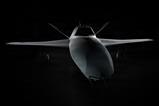Work on the US Army’s new long-range surveillance and intelligence collection jet is now on hold, pending the review of an appeal filed by the runner-up in the competitive bid process.
The army in August selected a bid from Sierra Nevada Corporation as the winner of a competitive selection in the High Accuracy Detection and Exploitation System (HADES) programme.
That effort seeks to deliver a so-called “deep sensing” aircraft to perform airborne surveillance and intelligence collection over long ranges. Sierra Nevada’s Bombardier Global 6500-based proposal edged out a bid from a team of rivals including L3Harris, Leidos and MAG Aerospace.

However, work on the new platform is now paused while government auditors review the contract’s evaluation and selection process, following an appeal from L3Harris, filed with the US Government Accountability Office (GAO) in September.
Known as a protest in Pentagon parlance, such appeals can be filed when any party with a direct economic interest in the outcome feels that government procurement rules were not followed or that the contracting agency did not make its down selection in accordance with the contract’s specified requirements.
L3Harris confirms to FlightGlobal that it has filed a protest with the GAO over the HADES decision, following an explanation of the decision by army officials.
“We carefully reviewed the information during the army’s debrief process, which led us to challenge the HADES decision and request further analysis to ensure the proposal received an equitable evaluation,” L3Harris says. “Our goal remains to ensure that mission operators receive the lowest-risk and most-capable solution available for an increasingly complex security environment.”
The company does not specify its issues of concern.
Sierra Nevada acknowledged the protest to FlightGlobal on 16 October, but downplayed the move as ”only a temporary delay”.
“We remain committed and fully confident in the superiority of our solution and the army’s selection of [Sierra Nevada] for the HADES contract,” says Tim Harper, vice-president of business development at Sierra Nevada. “Our solution is the best option that provides next-generation jets for the army that fly higher, faster and farther for deep sensing in large-scale and multi-domain operations.”
The filing of an official protest triggers an automatic stay of a contract award and launches a review of the contracting process by the GAO, with the agency required to render a decision within 100 days.
A similar process played out last year in another US Army aviation programme: the Future Long-Range Assault Aircraft (FLRAA). The team of Sikorsky and Boeing filed a protest in that case after losing the contract to Bell, with tens of billions of dollars in future revenue at stake.
The GAO in that case ultimately upheld the army’s selection of Bell as the winner of the FLRAA contract, allowing the company to move forward with development.

However, if the GAO finds any irregularities in the HADES selection process, it could throw the entire programme into chaos – as happened in 2008 with the US Air Force’s tanker replacement programme known as KC-X.
The service initially selected an Airbus A330-based solution from Northrop Grumman as its choice for the KC-X programme, covering 179 new aerial refuellers at a value of $35 billion. The Northrop-Airbus team beat a bid from Boeing, which challenged the selection with an official protest.
Although the GAO’s findings are non-binding, the KC-X review ultimately led to the initial selection being overturned, with air force subsequently adopting Boeing’s KC-46 tanker.
The auditing agency is scheduled to release its findings on the HADES case before year’s end.
Current plans call for 14 of the new jets to replace the roughly 70 Beechcraft King Air turboprop-based MC/RC-12 intelligence, surveillance and reconnaissance (ISR) aircraft currently in service.
Andrew Evans, director of the army’s ISR task force, in April described the programme as the “most-significant aerial ISR transformation in the history of the army”.































